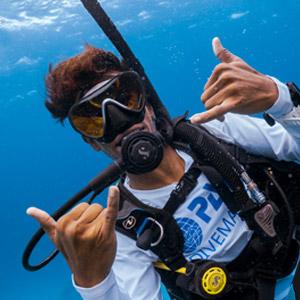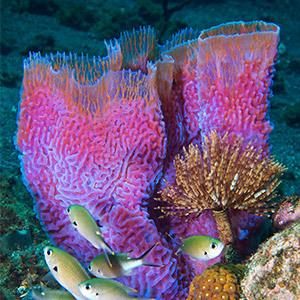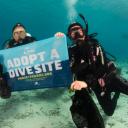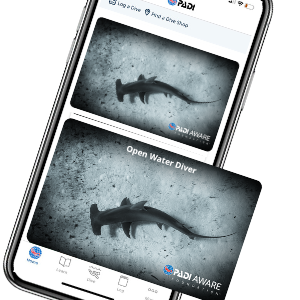
Public Safety Diver Training

What is Public Safety Diving?
Public safety dive teams search for lost or deliberately discarded objects and sometimes participate in criminal investigations. Their work can help provide legal and emotional closure and the job can be very rewarding.
Public safety divers may be called upon to look for evidence, locate underwater vehicles and missing people, but not all public safety dive team members get in the water. Surface support personnel handle important topside tasks, such as scene management and witness interviews.

Advanced Training and Skills
Public safety diving requires special training and a significantly different mindset than recreational diving. Public safety divers may be asked to dive in limited visibility and other hazardous conditions.
Public safety divers must have excellent search and recovery skills, learn special communication procedures and master self-rescue techniques. They also need topside training on how to manage a scene, bag evidence and interact with witnesses.

Public Safety Diver Training
In the PADI Public Safety Diver certification course, students learn how to evaluate and manage a scene, critical self-rescue skills, search and rescue techniques, and communication procedures.
PADI Surface Support Specialist is a sub-set of the Public Safety Diver course for nondiving team members. Students learn how to support divers from the surface, assist with pre-dive safety checks, equipment setup and scene management.
Divers who wish to expand their skills (and potential job opportunities) may enroll in the PADI® Advanced Public Safety Diver course.
Public Safety Diver Courses
CONTINUING EDUCATION
Recommended Articles
A. No, not for PADI’s Public Safety Diver, Surface Support Specialist or Advanced Public Safety Diver-level courses. However, your PADI Public Safety Diver Instructor does need to be affiliated with a public safety diver team.
If you’re already affiliated with a team, this training can enhance your capabilities within the organization. If you want to become a professional public safety diver, this training and experience may help you gain entrance onto a team.
A. The PADI Public Safety Diver program provides the foundational knowledge and experience public safety divers need to address challenges they may encounter in the field. Many professional public safety dive teams choose PADI training for their vocational or volunteer team members.
That said, a PADI Public Safety Diver or Advanced Public Safety Diver certification is not a professional/vocational credential or license by itself.
Many dive teams have a PADI Public Safety Diving Instructor on staff. Any dive team, department or other organization offering PADI training would be the entity to offer a vocational or professional credential, if available.
A. PADI public safety diver training takes place in realistic environments – not swimming pools. Also, our programs have the highest diver and experience prerequisites in the industry for foundational training. Students must have a PADI Advanced Open Water Diver certification (or equivalent) to begin the PADI Public Safety Diver course and must be certified Rescue Divers by the end. This requirement, when combined with our robust public safety diver training, results in a highly confident and competent dive team member.
Taken together, PADI public safety diver training programs can help improve the overall safety and efficiency of teams who use these programs compared to those who do not.
A. The PADI Dry Suit Diver and Full Face Mask Diver courses are at the top of the list. Most public safety divers use a dry suit not only for warmth but also protection from possibly contaminated water. A full face mask offers the same protection and is often fitted with communication gear that lets you speak with other team members. Other helpful specialties include: Emergency Oxygen Provider, Night Diver, Search and Recovery Diver, Self-Reliant Diver, Ice Diver and Underwater Navigator.
A. No. ICS training is required for Public Safety Diver Instructors based in the United States or in areas that operate under US Operational Guidance. However, this type of training may provide useful background information and may be required as part of your dive teams training. This training is available online for free at training.fema.gov/nims/.
A. PADI Public Safety Diver courses (PSD and Advanced PSD) do generally meet/address specific NFPA standards found in NFPA 1006 and in 1670 and are designed to be compliant with applicable OSHA regulations. PADI’s PSD and APSD courses are designed to meet or exceed those competencies established by NFPA 1006 and 1670. With the exception of the disciplines of Ice (9.3.7), Sur (9.2.8) or Swift Water (9.3.9).
As part of your PSD training and where required we encourage you to review the most current National Fire Protection Association (NFPA) Standards 1006, 1561, 1670, with your instructor. These items may be found online at www.nfpa.org.
It may also be prudent to review the most current OSHA regulations and standards, such as Part Number 1910, Subpart T, Standard Number 1910.401, as applicable – These items may be found online at www.osha.gov.
There may be other operational guidance from regulatory bodies depending on your location. Be sure to thoroughly research, review and incorporate all applicable regional guidance/requirements as appropriate to your location. For example from:
- The Occupational Safety and Health Administration (OSHA) – United States of America
- Health and Safety Executive (HSE) – United Kingdom
- Canadian Centre for Occupational Health and Safety (CCOHS) – Canada
- Australian Institute of Health and Safety (AIHS) – Australia

 Open Water Diver & Dive Against Debris eLearning Bundle
Open Water Diver & Dive Against Debris eLearning Bundle
 Advanced Open Water & Enriched Air eLearning Bundle
Advanced Open Water & Enriched Air eLearning Bundle
 Emergency First Response
Emergency First Response
 FREE – Introduction to Scuba Diving Online
FREE – Introduction to Scuba Diving Online






 Marine Debris
Marine Debris
 Shark & Ray Protection
Shark & Ray Protection
 Adopt The Blue
Adopt The Blue


















